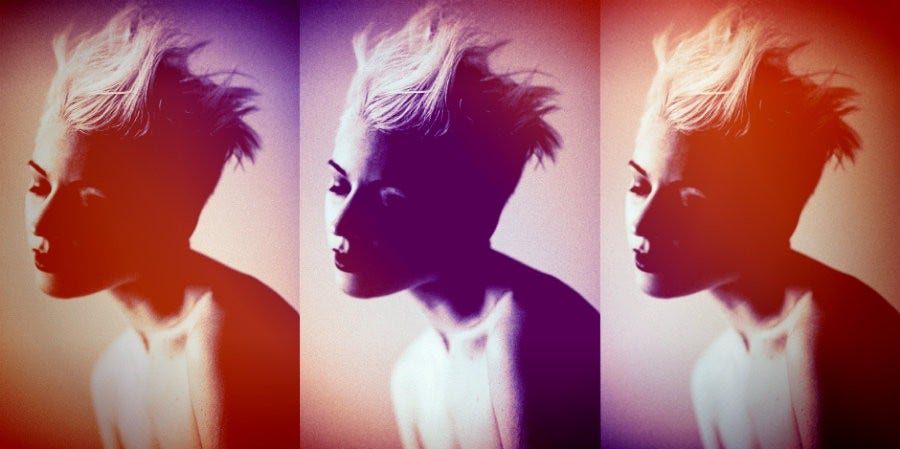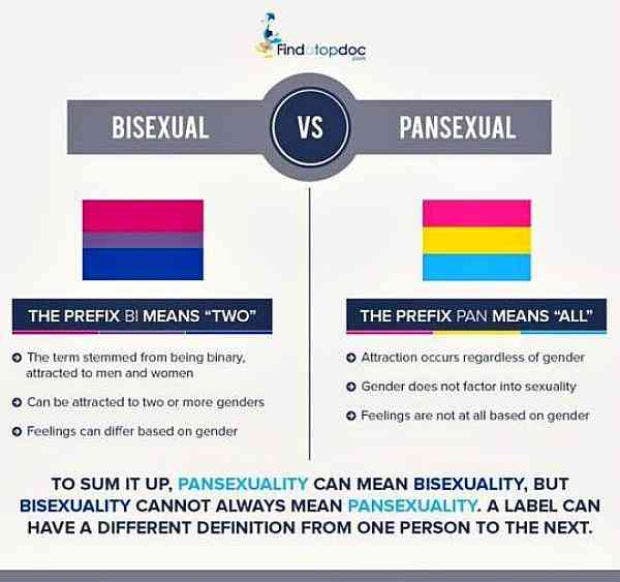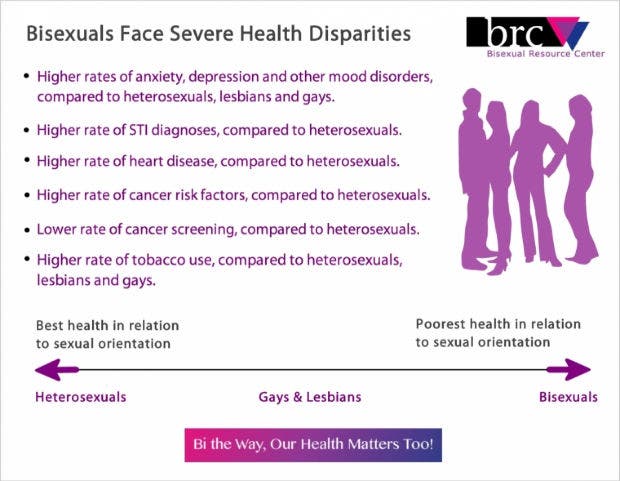What It Means To Be Pansexual Vs. Bisexual: Decoding The Differences In The LGBTQIA Alphabet Soup
Respecting other humans is as easy as listening to the words they use.
 Alex Sheldon on Unsplash
Alex Sheldon on Unsplash When I was growing up, there were only so many words to define sexual identity and orientation.
If you found yourself attracted to both men and women, you probably identified as bisexual.
At the time, it was the best term available, even if it failed to capture the full spirit of how you felt.
Luckily, we now know more about the spectrum of gender and human sexuality. There are now a lot more terms available, as evidenced by the growing framework of LGBTQIA+ (lesbian, gay, bisexual, transgender, queer or questioning, intersex, and asexual or allied) terminology.
Am I bisexual?
If you've asked yourself this question, you may also wonder whether you should actually consider yourself pansexual.
But what’s the difference between being pansexual vs. bisexual — and how do terms like polysexual and omnisexual fit in?
First, let’s look at the definitions of pansexual vs. bisexual in order to better understand each one.
What does bisexual mean?
The LGBTQIA Resource Center at UC Davis offers this definition for someone who is bisexual:
"A person whose primary sexual and affectional orientation is toward people of the same and other genders, or towards people regardless of their gender."
What does pansexual mean?
They use pansexual interchangeably with omnisexual, which for which they offer this definition:
"Terms used to describe people who have romantic, sexual or affectional desire for people of all genders and sexes."
These terms are fairly similar, and some people may identify as one or the other, or even as both.
Many times, your gender identity and orientation plays a big part in determining whether you identify as pansexual, bisexual or something else.

When I was younger, all of the terms used to describe sexual orientations other than heterosexuality were limited in scope, and also could be (and were) used as insults.
Most people knew the words gay, straight and lesbian.
They also knew the word bisexual, and some people were even beginning to use the word queer in a neutral or even positive way.
When I was first coming to terms with my own sexuality, many people — both straight and gay — insisted that bisexuality wasn’t real.
But it was the only word I had to describe how I authentically felt.
Sadly, bisexual erasure, also known as bisexual invisibility or bi-erasure — defined by GLAAD as "a pervasive problem in which the existence or legitimacy of bisexuality (either in general or in regard to an individual) is questioned or denied outright" — is still alive and well.
There are other myths about bisexuality that persist, too, and can make figuring out what terms best describe your sexual identity and orientation more complicated.
Here are a few incorrect assumptions and stereotypes about bisexuality I came up against from other people:
- I wasn’t bisexual because I was in a relationship.
- I wasn’t bisexual, I was just confused.
- Being bisexual means that I’m letting women down as another tool of the patriarchy.
- The nature of bisexuality, both as a term and as a sexual orientation, reinforces the myth that there are only two genders — and is, therefore, transphobic.
 Source: Bisexual Resource Center
Source: Bisexual Resource Center
Many of these myths persist today — not just about bisexuals, but about pansexuals, too.
Pansexuality is similar to bisexuality, but by definition, pansexuality holds space for gender presentation and identities to be more fluid.
Despite pansexuality being more expansive and open, being pansexual does not mean being attracted to just anybody and everybody you see.
(It also has nothing to do with pans. You're not attracted to cast iron or that fine Le Creuset. Though a lot of us make jokes like this to take the sting off of the insults and myths that claim pansexuality doesn’t exist.)
Some people believe pansexuality is the answer to what is seen as transphobia within bisexuality.
But is bisexuality inherently transphobic?
Some critics believe the prefix "bi-" — meaning two — implies a belief or statement that there are only two genders, which is transphobic.
However, the Bisexual Resource Center clarifies their use of the bi label to mean "anyone who is attracted romantically and/or sexually to more than one gender, otherwise called 'non-monosexual' or 'middle' identities. This includes labels like pansexual, queer, omnisexual, sexually fluid, and more, and even folks who decide not to take a label."
There is also confusion around the myth that only people who are polysexual or pansexual are attracted to transgender or gender non-binary folks.
That's simply not true.
As Jaz Joyner writes in Pride, "Limited attraction to only cis men and women isn't innately transphobic. I personally don't think it's fair to immediately call someone's sexual interests discriminatory because attraction is complex and the reasoning behind someone's interests aren't always so cut and dry ... Unlike early understandings of bisexuality, there are now several definitions, some trans-friendly and others not.
The most recited definition might still be binary, but this is no different from narratives for trans people in mainstream media: the general understanding of being trans is that someone can be a trans man or trans woman, but it's still not well known that non-binary genders even exist.
So basically, most of society has a lot of catching up to do."
Labeling oneself pansexual vs. bisexual may also be related to the gender orientation and identity of the person in question.
If they identify as genderqueer or nonbinary, using the pansexual label may feel like more of a fit for that person.
Someone may consider themselves pansexual due to the nature of the way we talk about gender and sexual identity and orientation in general.
In the English language, words for sexuality may reflect upon the gender of the person being described.
A lesbian, for example, is often defined as a woman who is sexually and romantically attracted to other women.
While bisexual is a great term, some people may feel pansexual is more accurate label for themselves because pansexual also holds space for their own gender — not just the gender of someone they may be attracted to.
If you still don't feel either pansexuality or bisexuality is an accurate label for you, there are other words that may be helpful in understanding where you fall in the spectrum of sexual identity and orientation.
For instance, words like omnisexual and polysexual have slightly different meanings, as explained below.
Omnisexual: According to Affinity Magazine, the key distinction between omnisexuality and pansexuality is "the fact that pansexuality is the attraction to people regardless of gender, meaning that they could date a man, a woman, someone identifying as non-binary or anyone else without said person’s gender playing a part in whether they date them or have the capacity to love them. Whereas omnisexual is the attraction to anyone despite their gender, meaning they could also date a man, a woman, someone identifying as non-binary or anyone else, while noticing their gender but not caring how they identify."
Polysexual: As defined by Wikipedia, "Polysexuality is sexual attraction to multiple, but not all, genders. A polysexual person is one 'encompassing or characterized by many different kinds of sexuality.'"
Again, there are more shades of meaning to each of these words.
While they are similar in many ways, their subjective nature and the way these orientations and identities manifest differs from person to person.
I personally use multiple words to describe myself — though if I had to be precise in my own descriptions, I’m an omniromantic demisexual.
That sounds like a lot, but it just means I’m attracted to people no matter how they may identify, and the feeling of that relationship may be different depending on that person’s gender.
As a demisexual, I have to feel an emotional connection with someone before becoming sexually attracted to them.
That said, I also use pansexual to describe myself, since I identify as genderqueer and nonbinary.
I have a deep emotional connection to the word bisexual, due to my history of identifying as such.
After all, identifying as bisexual helped me realize just how queer I was.
If you find this confusing, that's OK. But it doesn't have to be hard.
Respecting other humans is as easy as listening to the words they use.
If you are at Pride (or anywhere else) and someone says they are bisexual, they are bisexual.
If someone else says they are pansexual, or that they might feel like the word pansexual describes them, trust them!
Even if they are still figuring out the LGBTQIA+ vocabulary and which words best fit, that is their journey — and only they get to choose how to define the way they feel.
Katriel Paige is a writer and user experience advocate whose essays have appeared on sites like Inside Higher Ed, The Establishment, and more. They also advocate for accessibility and inclusion in technology, and spend any free time playing tabletop role-playing games. For more, visit their website.

